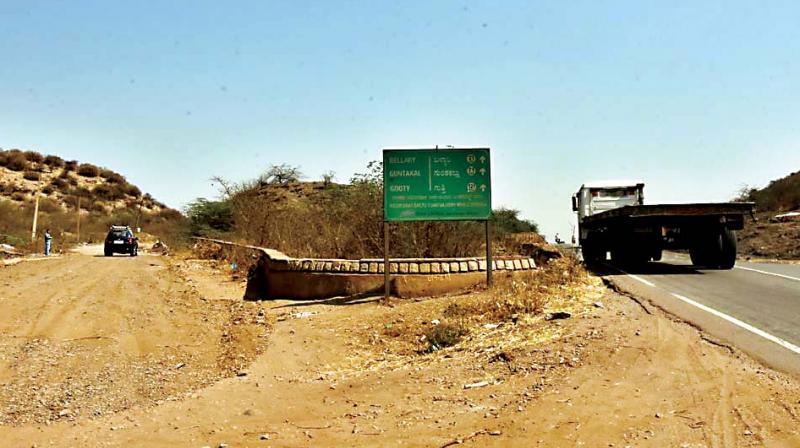Sunday Story: Nhai's road to ruin Ashmound faces threat

This ashmound represents the earliest pastoral community settlement in Ballari region and is associated with the Neolithic period when hunter-gatherers became agriculturists and domesticated animals such as cattle and sheep. It is the largest among the 300 sites in Ballari, Chitradurga, Raichur, Kalaburgi, Bijapur and Bidar districts in Karnataka, and Mahboobnagar, Ananthapuram and Kurnool districts in Andhra Pradesh. Archaeologists from across the globe visit the mound to study the rise of an agricultural way of life in India, Shivakumar G. Malagi analyses the threat to this mound from NHAI
A nearly 5,000-year-old Neolithic ashmound on Budikanama Pass, Ballari-Hospete Road, near the Ballari Thermal Power Station, is one of the most important archaeological sites in southern India and probably the biggest.
But this is not stopping the National Highways Authority of India (NHAI) from planning to demolish it merely to build a four-lane highway.
Going by noted archaeologist, Professor Ravi Korisettar, the loss could be enormous as the ashmound represents the earliest pastoral community settlement and is associated with the Neolithic period when hunter-gatherers became agriculturists and domesticated animals like cattle, sheep and goat.
“This ashmound is the centre of a series located in Sangnakallu, Kurugodu, Toranagallu, Gadiganur, Kurekuppa, Halkundi and other places. It began to form due to the deliberate accumulation and setting on fire of cattle dung during rituals related to selection of a spot for a village.
“This is the largest among 300 sites in the districts of Ballari, Chitradurga, Raichur, Kalaburgi, Bijapur, Bidar, Mahboobnagar, Anathapuram and Kurnool in Karnataka and Andhra Pradesh. Archaeologists from across the globe visit the mound from time to time, especially those who are engaged in studying the rise of an agricultural way of life in India. A representation has been made to the district administration to save this site and we hope the authorities will come out with an alternative site for the highway,” said the professor.
Environmentalist Santosh Martin says the Deputy Commissioner of Ballari wanted legal documents to help protect the site and Prof Korisettar was able to unearth a notification from the Commissionerate of Archaeology, Museums and Heritage, Government of Karnataka. “Hopefully this will be of some use to us,” he added.

